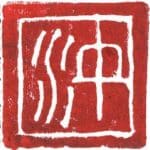CONTRIBUTED BY MEREDITH NOVARIO
Three things this post WAS going to be about until exhaustion punched me in the ear.
- Our last deployment has begun and that is groovy, hum-drum and infuriating all in one tidy ball that I think I threw out the window or left in the car or something.
- Henry has an upcoming field trip to the Orion Brewery with his day-care. D-A-Y C-A-R-E + B-R-E-W-E-R-Y. Not sure what that equals. I might be more amused than I am concerned.
- Maltsby may be on his way home thanks to the awesome-ness of awesome people.
But seriously, who cares? Why subject you to the minutia of my life when I can tell you about that car we recycled for enough money to pay for my very own Koinobori set AND that noren I’ve been coveting over at Murasaki Mura. Now that is something to get hot and bothered about at the water cooler.
For three years now I have seen signs about how the local dealerships JUNK vehicles for free. And I thought that was cool because junk is definitely what our cars have become and junking is in order because the bad karma we would rack up if we tried to sell these vehicles would not be worth it. And big garbage, like a car, would cost a lot to put out on garbage day so I’m all thinking ahead and ready to get our cars junked for free. What a bargain, thinks me.
Joe thinks not.
Turns out you can get paid to recycle your car. Instantly. My guess is that those dealerships that junk your car for free are recycling your car for cash that could have been yours. Not sure that’s true but why else would they want to junk your car for free?
Joe’s Honda Civic was put to rest last week BUT we didn’t junk it. We RECYCLED it. Sounds nicer than junking anyway, wouldn’t you say? And we got paid money for it. 47,000 yen. Joe says that was based on weight and had nothing to do with the state of the car which was definitely Rated R. Then he got money back from the insurance company and our JCI on top of that. Five hundred dollars later we’re one car down and we hardly had to interact with humans to boot. No advertisement on Japan Update, no phone calls or bargaining with all the suitors, no fake promises about how it isn’t just a hunk of broken aluminum.
This list of HOW TO RECYCLE YOUR CAR was passed down to Joe. And now I pass it down to you. Author is unknown. Author lined our pockets. If I had any idea who Author was I would hire him to organize my shelves.
If your car is junk and needs to be junked, RECYCLE instead!
I’m moving over to let the Author speak.
The below (by the numbers) can take approximately 2 to 3 hours of your time, depending on how fast you move. However, so as long as I’m on Okinawa, I’ll never turn my “junk” vehicle over to Typhoon Motors because you will receive nothing by them recycling your vehicle for you. My vehicle, a Toyota Surf (bad engine) gave me a return of $800.00 by doing these steps myself.
First:
- Drive/Tow the vehicle to the recycling center. Here are the directions:
- Go towards Naha (south) on route 58. Make a right turn as if going into Camp Kinser’s gate 4 (Esso station on right).
- Go past the first set of traffic lights to the bottom of the hill. On the right hand side you will see a yellow/tan warehouse. In between the two warehouses is the entrance.
- Once you go in, about 75 meters up, you will see a huge weighing scale on the left. Drive your vehicle onto the weighing scale.
- There will be a beeping sound once your vehicle has been weighed. Once you are done, you will be directed to another garage.
- Once you get your vehicle to the garage site, there is where you will be turning over your vehicle. At that point, you will be given your license plates (2) and your road tax sticker off of the windshield. Remember, at this point, you will no longer have the vehicle, so make sure all personal items are out.
- Take the plates, road tax sticker, paperwork from Foster Veh. Registration and all of your paperwork from your vehicle back to where you got the vehicle weighed. Go inside the bldg thru the sliding doors.
- Once inside, the civilian will call you for your signature and address on a sheet of paper. They will then pay you (in Yen) depending on the weight of your vehicle. This might take about 15-20 min.
- Once you are paid, they are done with you.
Second:
- Take all of your paperwork that you will have in hand (to include paperwork from recycling cntr, license plates and road tax sticker) and go back to the vehicle registration office at Camp Foster. Hand the personnel behind the counter your paperwork.
- They will then direct you to a counter on the right side of the bldg (same office space). There they will stamp some of your paperwork and you must pay a 1,000 Yen fee to have your vehicle deregistered (on base). They only accept Yen.
Third:
- Once again, take all items (plates, stickers, paperwork etc..) to the Land Transportation Office (LTO) which you passed when you went to the recycling center. Here are the directions:
- Make the same right turn as if going to the recycling center (Esso station), but this time, you will make a right turn at the first stop light. You will see a sign above the street light that reads “Land Transportation Office”.
- Follow the road (downward) for about 200 meters until you come to BIG (there are a few smaller ones) open parking lot almost at the end of the road. Turn left into that lot.
- You will know that you are in the correct parking lot because you will see a garage type bldg with numbered stalls directly in front of you.
- To the left of all that, you will see a bldg marked with LTO. Go inside.
- Once inside, ask sometime to direct you to Counter D. There you will turn in your license plates. They will keep the license plates and stamp your paperwork. You will then be directed to report to the Military/SOFA Status Counter, # 2.
- At Counter # 2, you will hand them all of your paperwork (they’ll return what they don’t need back to you). They too will stamp some of your paperwork. This is the counter where you will actually receive the original “de-registration” paperwork that clears your name off of that title. It’s very important to keep this until you actually check out to leave Okinawa.
- Once you are done with counter 2, you will be directed to report to a separate bldg (behind the bldg your in) and you will report to the “Road Tax Refund Center”.
- Here they will either refund you a portion of your road tax (in Yen) proportional to the last time you paid road tax, or in my case, I had to pay one month’s road tax because my vehicle was coming up on needing the road tax in May.
Fourth:
- Take whatever remaining paperwork that you might have to your insurance company (AIU, ACE, etc.). Then they will cancel your insurance policy for that vehicle (JCI, American Insurance) again proportional to when you last paid for these and refund you a portion back.
Last and final note:
- You might want to check with vehicle registration at Foster about a week or so later and have them check to see if all has cleared for you on that vehicle. This may sound like a little bit of inconvenience and some driving, but it was worth it for a vehicle that I would not be able to sell.
{EDITOR’S NOTE, JUNE 2012: This post originally gave directions to go to Foster’s vehicle registration office as the first step. We have been informed that this is not correct and have removed that information from this post.}
___________
All the posts in Meredith’s “Me & My Big PCS” series: I, II, III, IV, V, VI, VII, VIII, IX, X, XI, XII, XIII, XIV, XV, XVI, XVII, XVIII, XIX, XX
For posterity’s sake we have left this universally euphoric, terrified, confused, “what am I doing?!” series on Okinawa Hai. On most other posts in this series we have closed comments; however, this post is full of still-relevant and helpful information. Please read through the comments below as well. Thank you for joining us on this ride.

